Non-Toxic Air Fryer: Does it Exist?

You like crispy fried food but want to avoid deep frying? Perhaps, an air fryer can help you with that, although experienced fried food eaters say that air-fried food is still not the same as the deep-fried food. For us, however, the main question is whether a safe air fryer that does not leach toxic chemicals into the cooked food and air even exists. Given air fryers are relatively new appliances on the market, there has not been much research done into them yet. In this air fryer review, you will find tips on how to look for a non-toxic air fryer. Additionally, you will gain enough knowledge to draw your own conclusion about the safety of the existing air dryers. If you are looking for non-toxic cookware, check out our Safe Cookware Guide.
In this post:
- Live Healthy with I Read Labels For You
- What is an air fryer anyway?
- What’s the difference between an air fryer and a halogen air fryer oven?
- Are air fryers safer than microwaves?
- Do all air fryers produce acrylamide?
- Are air fryers toxic?
- Do air fryers have toxic chemicals?
- Why do air fryers have Prop 65 warning?
- What is the safest air fryer?
- What does Consumer Reports consider the best air fryer?
- Does Cuisinart use PTFE?
- Is there an air fryer without Teflon?
- What material is the Ninja air fryer made of?
- Conclusion about Non-Toxic Air Fryer
Live Healthy with I Read Labels For You
As usual, I Read Labels For You uses a comprehensive approach to research. Indeed, we study the industry, ingredients, and scientific data on the subject as well as contact manufacturers for clarifications. Granted, you cannot avoid exposure to all toxic chemicals in your life. However, you can reduce it by making informed decisions about your purchases.
Thus, installing an effective water filter system in your house is already a big step towards healthier living. If you have done that and are ready for another challenge, consider swapping your memory/polyurethane foam mattress for an organic mattress. Done that? Great! Check your laundry detergent – there is always room for growth!
This is exactly what you are doing by setting out to find a safe air fryer. Importantly, you do not just follow marketing claims but educate yourself to make an informed decision!
In search of a non-toxic air fryer, we have contacted several companies and compared the materials they use. Read on to see if you can find a safe air fryer among Oster, Emeril Lagasse, and HomeLabs air fryers. But first, let’s have a quick and fun Q&A session about air fryers.
What is an air fryer anyway?
To begin, an air fryer is a kitchen appliance intended to help you achieve crispiness of food without dipping it into gallons of hot oil. In its cooking mechanism, it is like a convection oven that uses coils and a fan for constant air circulation. The main difference is the size: designed for smaller kitchens and smaller food intake, an air fryer can be placed on a countertop.
Technically, the fan in an air fryer circulates hot air around the food, distributing the heated air quickly and evenly. Plus, a perforated food basket helps expose all sides of the food to the air for an all-around fried finish. Reportedly, this creates the same crispiness as in traditional fried foods.
To compare, a conventional oven with heating coils on the top and bottom of the cooking cavity works differently. Without a fan to circulate the hot air around, it doesn’t remove moisture from the food for a crispy result. Hence, while you can bake in some air fryers, you usually cannot air fry in a conventional oven.
What’s the difference between an air fryer and a halogen air fryer oven?
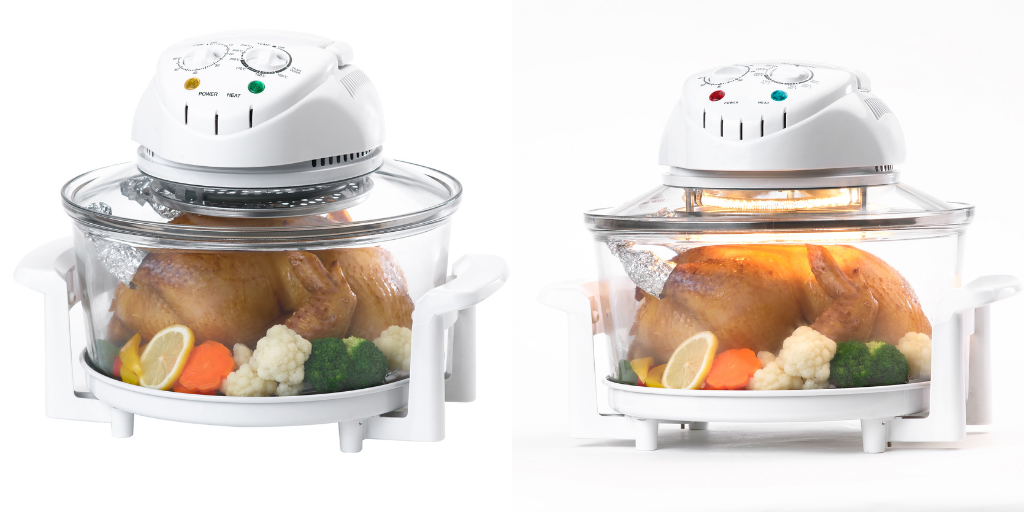
Can a halogen oven be an option for a safe air fryer? Actually, it is easier to find a halogen air fryer without the concerning materials normally used in air fryers. Then, is a halogen air fryer the answer to our quest for a non-toxic air fryer? Let’s see.
Despite the similarity in the cooking purpose, there is a distinctive difference in the cooking approach. Thus, air fryers use a coil and a fan while halogen ovens use a halogen light bulb and infrared energy. In a halogen oven, the infrared radiation induces vibration in the food water molecules, proteins, and starches. This, in turn, causes that brown and crispy surface on the cooked food.
So far, we have not found any information as to the safety of the food cooked by infrared radiation. Neither do we know whether the levels of infrared radiation that halogen ovens emit in the process are safe. Therefore, we cannot say unequivocally that a halogen air fryer oven is an option for a totally safe air fryer.
While halogen oven proponents strongly believe they are safe, in our opinion, the jury is still out. Since it is a relatively recent invention, the safety data has not been collected yet. Let us know in the comments your stance on halogen ovens and whether you have found a non-toxic air fryer!
Are air fryers safer than microwaves?
First, air fryers and microwave ovens use different mechanisms. Specifically, an air fryer utilizes heating coils and a fan in its cooking cavity. It is the circulating hot air that cooks the food quickly and evenly and gives it a crispy surface.
Conversely, microwave ovens heat/cook the food by exposing it to electromagnetic (not infrared) radiation in the microwave frequency range (source). As a result, polar molecules in the food start rotating and producing thermal energy, which is known as dielectric heating.
Second, air fryers and microwave ovens are used for different purposes and length of time. Hence, comparing their safety doesn’t seem to make that much sense.
Finally, according to the World Health Organization, “food cooked in a microwave oven does not become ‘radioactive’. Nor does any microwave energy remain in the cavity or the food after the microwave oven is switched off.”
Do all air fryers produce acrylamide?
To begin, it is a legitimate question. Even if you are using a safe air fryer in terms of the materials, it is the cooking method that is put to test here. Indeed, acrylamide is a compound that forms in some foods during high-heat cooking methods. You want to avoid acrylamide (even if you are using a non-toxic air fryer) because it is reasonably anticipated to be a human carcinogen (National Toxicology Program).
So, do air fryers produce acrylamide? Or even, do air fryers produce more acrylamide?
As I’ve mentioned, due to the relative novelty of the invention, there is not much available research on air fryers. However, this paper describes the effect of air-frying and deep-frying technologies regarding the formation of acrylamide in pretreated potatoes. The experiments showed that air-frying reduced acrylamide content by about 90% compared with deep-oil-frying.
Keep in mind, though, that one study is hardly enough to draw long-term conclusions. Besides, high-heat cooking causes the formation of not only acrylamide but also other compounds, such as polycyclic aromatic hydrocarbons (PAHs).
Are air fryers toxic?
There are two ways to look at this question: from the perspective of the cooking method and the materials.
First, the high-heat cooking method is used. On the one hand, air-frying is comparatively healthier than deep-frying because it doesn’t use as much oil. On the other hand, high heat cooking still has some side effects in some foods, such as formation of acrylamide and PAHs. In other words, we believe that even a safe air fryer should not be overused, and fresh vegetables are a must for a healthy diet.
Second, in terms of materials used to build the appliance, even a so-called “non-toxic air fryer” may have potentially harmful materials. Specifically, the materials may leach into the food or produce VOCs that can be harmful to inhale. That’s why it is important to inquire what materials your air fryer is made of.
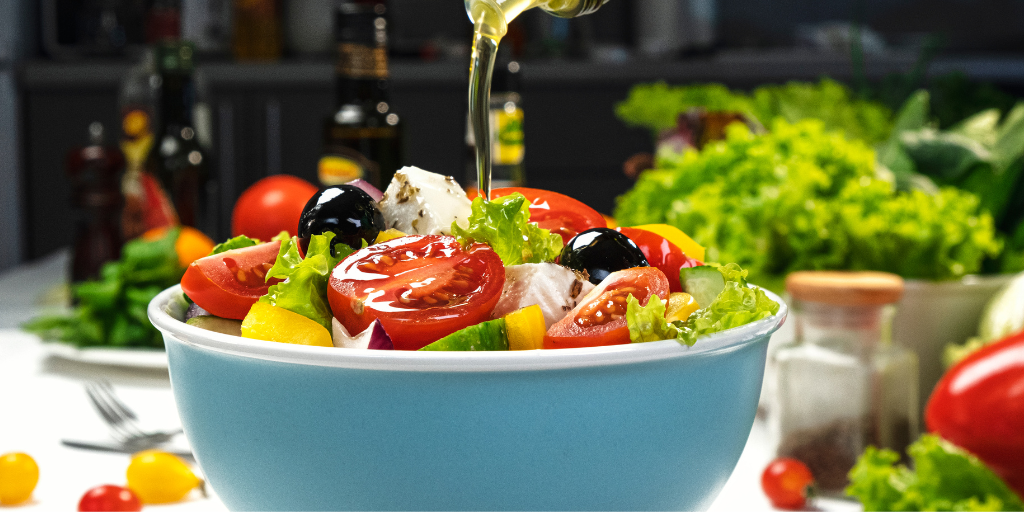
Do air fryers have toxic chemicals?
Yes, they may. Namely, most air fryers use non-stick coating that is normally made of polytetrafluoroethylene (PTFE), a polymer of tetrafluoroethylene, aka Teflon. It has many applications such as in non-stick cookware and as anti-stain and waterproof protection. In addition, some makeup products use it to “condition” the skin, which makes it appear shiny, and to increase durability and water resistance of the products. (Make sure you are using non-toxic makeup.)
The problem with PTFE is that it contains per- and polyfluoroalkyl substances (PFAS), including perfluorooctanoic acid (PFOA) and perfluorooctane sulfonic acid (PFOS). These substances are associated with certain health effects, including cancer, reproductive toxicity, and immunotoxicity (source).
Moreover, PFAS are persistent in the environment and bioaccumulate in people and wildlife (source). What is especially concerning is that they may leach into food, produce potentially harmful fumes, and pollute the environment. So, when looking for a safe air fryer, the PTFE coating is something to take into consideration. (Use our GreenPan Review to choose safe non-stick cookware.)
Another concerning material in an air fryer is aluminum. Thus, in our Safe Cookware Guide we place aluminum cookware in the “worst” category. The good news is that aluminum does not produce VOCs, so you can just cover the aluminum part. Keep reading to see which air fryer we consider a relatively non-toxic air fryer because it has no aluminum.
Why do air fryers have Prop 65 warning?
Also, why does an air fryer have cancer warning?
First off, California Proposition 65 is a list of chemicals known to the state of California as causing cancer or reproductive toxicity, republished at least once a year (source). Manufacturers must include Prop. 65 warning even if their product contains just one chemical from the list.
So, should you worry about the Prop. 65 warning?
In our opinion, there is no need to worry about it when you are not directly exposed to the harmful chemical. For instance, the chemical may be in the electrical cord or the heating element of the product with no direct contact with the food or the user. Alternatively, the harmful chemicals can be in the accessories, touching the food, and then it is not fine at all!
However, the confusing part is that we do not always know where exactly the harmful chemical is in the product. In search of a safe air fryer, we contacted several companies with this question. Except for one company, whose appliance we consider a relatively non-toxic air fryer, the other companies gave us evasive answers. It appears they either do not want to be transparent (which is a red flag) or do not know the answer and cannot admit it. Therefore, we encourage you to be active and contact manufacturers with questions so they would know the answers! Beware of the manufacturers that cannot explain which chemical in their product triggered the warning and where it is located.
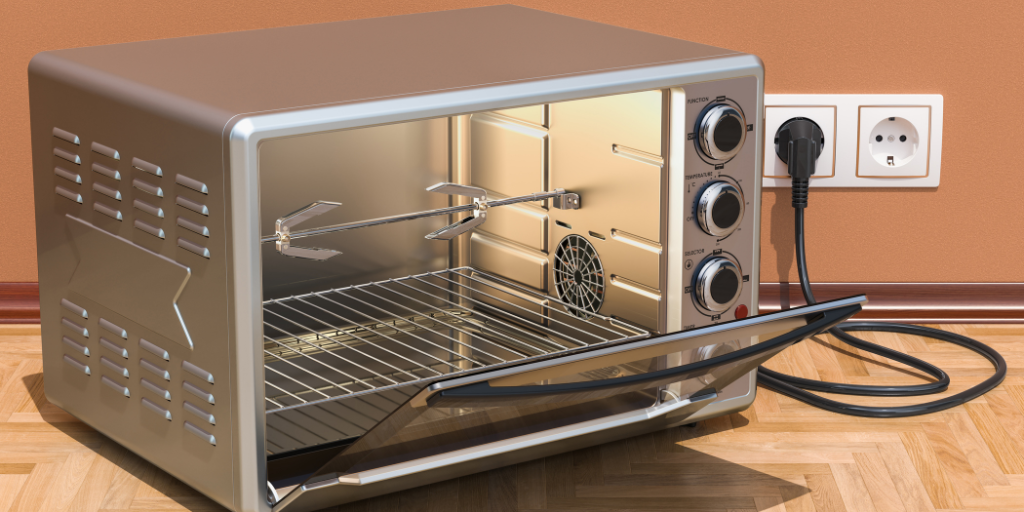
What is the safest air fryer?
In our opinion, the safest air fryer contains the lowest number of questionable materials. Additionally, the company that claims to have a non-toxic air fryer should be as transparent as possible.
Compare the Oster, Emeril Lagasse, and HomeLabs air fryers below and draw your own conclusion.
| Oster® Compact Countertop Oven with Air Fryer, Stainless Steel | Emeril Lagasse Power Air Fryer 360 | HomeLabs 11.6 Quart XXL 8-in-1 Air Fryer Oven | |
| California Prop. 65 warning | Yes. The trigger location is unclear (red flag). | Yes. The trigger location is unclear (red flag). | Yes. The trigger location is the power cord (which is fine). |
| Non-stick coating | Yes. Made of galvanized or aluminized steel. | Unclear | Yes. PTFE on the tray (consider not using the tray). |
| Aluminum | Yes (baking pans, broiling pans, trays). | Yes (accessories) | No |
| Other materials | The body is steel with a baked-on enamel coating. The rack is chrome plated steel. There is no nickel in these components. | The body is galvanized steel. The accessories are combinations of chrome plated steel, chrome plated iron, aluminized steel, and galvanized steel. | The body is stainless steel and plastic. The internal cavity is zinc plated steel. The fetch tool and fruit dehydrating tray are chrome-plated steel. Other accessories are stainless steel. |
Given the options, HomeLabs, though not ideal, is the safest we have found. Hence, it is in the IRLFY Amazon shop with many other non-toxic products. (As of January 5, 2023, this unit is “out of stock,” yet the company says it is not discontinued.)
What does Consumer Reports consider the best air fryer?
For starters, the Consumer Reports lab focused on finding the most convenient, rather than the safest, air fryer. The testers evaluated the model’s capacity and noise levels as well as how easy it was to control and clean. In other words, “the best” air fryer does not automatically qualify as a “non-toxic” air fryer.
After testing more than 50 models, the Consumer Reports lab concluded that they all cooked the food nicely. Yet, it did not taste the same as deep-fried food.
Ultimately, the Consumer Reports air fryer tips on how to find the best appliance are:
– consider the space you have for it and
– consider the amount of food you want to cook at once.
While most air fryers are 2 to 5.8 quarts, the testers discovered that the actual capacity was often smaller than claimed.
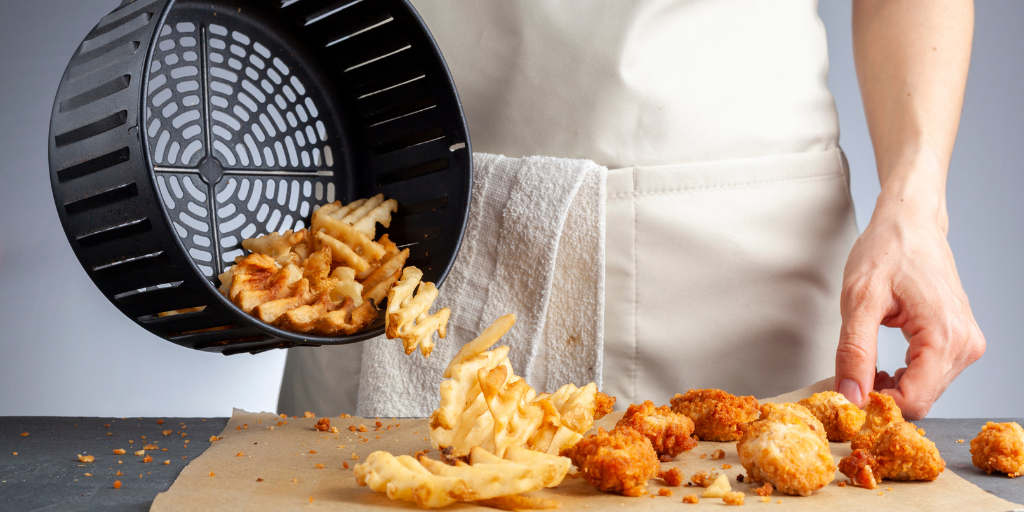
Does Cuisinart use PTFE?
The answer to this question is unclear because of the discrepancies in the information provided by the company. Thus, the Cuisinart website describes their air fryers as featuring “nonstick easy-clean interior:”
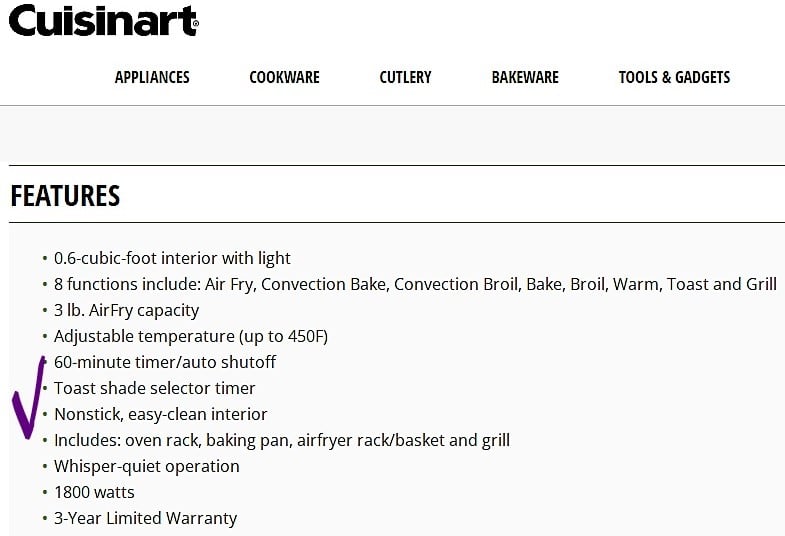
However, when we contacted them, they said:
The Cuisinart Air Fryers have a coated steel interior. There is no Teflon or non-stick coating in any of these units. The Air-Fry Rack Made of Steel Wire Chrome Plated, Wire Rack Made of Steel Wire Chrome Plated and Baking Pan Made of Aluminum Plated Steel.
As you can see from their answer, it is not clear what the interior is coated with. We encourage you to contact them, too, and ask for clarifications.
Is there an air fryer without Teflon?
Actually, one of the mandatory questions we asked of the manufacturers in our quest for a safe air fryer was about their non-stick coating. So far, we have not found a non-toxic air fryer without a non-stick coating, which is in many cases PTFE.
On the other hand, we did find many halogen air fryer ovens that do not use Teflon non-stick coating because they are made of glass.
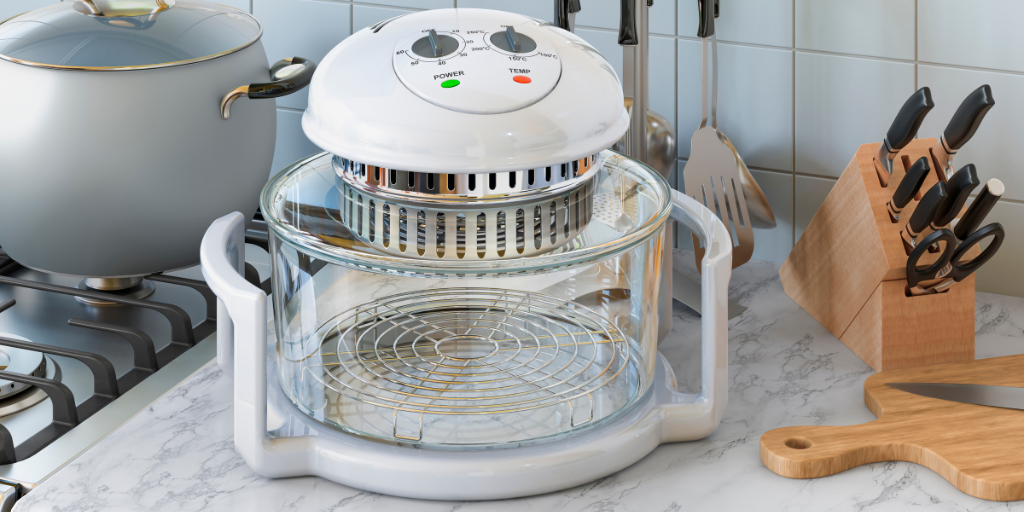
What material is the Ninja air fryer made of?
We encourage you to contact the Ninja company to find out whether the Ninja Foodi is Teflon-free and what materials their air fryers are made of.
Specifically, consider asking them the following questions:
- Are there any non-stick surfaces, materials or accessories in your air fryer?
- What substance do you use for non-stick coating – is it PTFE?
- What is the cavity made of?
- What other materials are used to build the unit?
- Are your pans, trays, and baskets made of aluminum?
- Does the unit have a California Prop. 65 warning on it?
- What chemical(s) in the unit triggered the CA Prop. 65 warning and where is it (are they) located?
Feel free to add on other questions to find out as much about your appliance as possible. You deserve to know the truth!
Conclusion about Non-Toxic Air Fryer
In sum, if you like crispy fried food but want to avoid deep frying, an air fryer can help you with that. Is it possible to find an absolutely safe air fryer that does not leach toxic chemicals? Perhaps. The closest to a safe one we have found is HomeLabs 11.6 Quart XXL 8-in-1 Air Fryer Oven. It is not ideal, but at least it doesn’t use aluminum and discloses the trigger for the CA Prop. 65 (electrical cord, which is fine, because it doesn’t touch the food).
Bear in mind that air fryers are relatively new appliances in the market, so there is not much research available yet. Plus, when you contact companies, they may give conflicting information on materials. Specifically, it is not always clear whether there are concerning substances that can come in contact with food.
However, it is important to keep reaching out to manufacturers because we deserve better transparency. The more of us who ask questions of companies, the more attention the companies will pay to us and eventually make safer products.
Browse our IRLFY shop and our Amazon shop for non-toxic products. Check out our unprecedented Baby Wipes, Diaper, and Permanent Hair Color e-books. And consider booking a consultation if you would like help on your healthy living journey.

Download The Free Guide!
5 Powerful Steps To A Non-Toxic Home
Join our informed consumer community and get our free guide the “5 Powerful Steps To A Non-Toxic Home”.

 Written by
Written by 
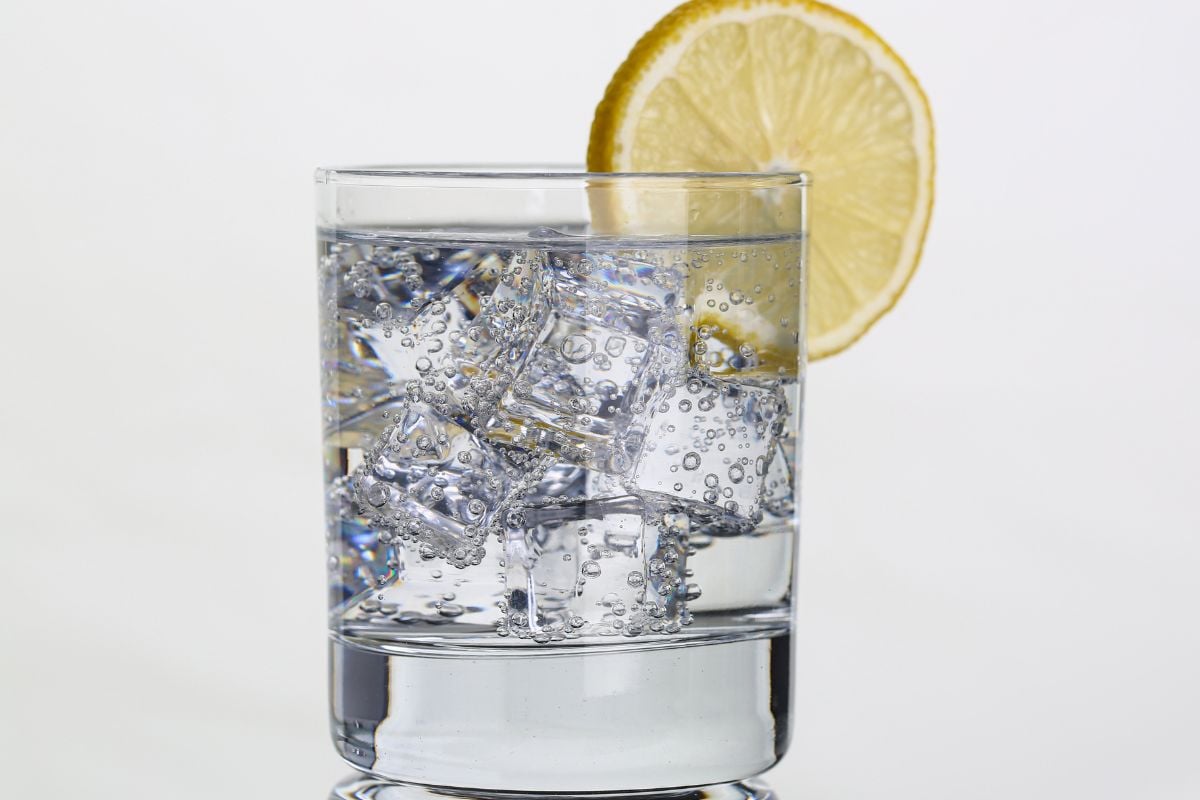
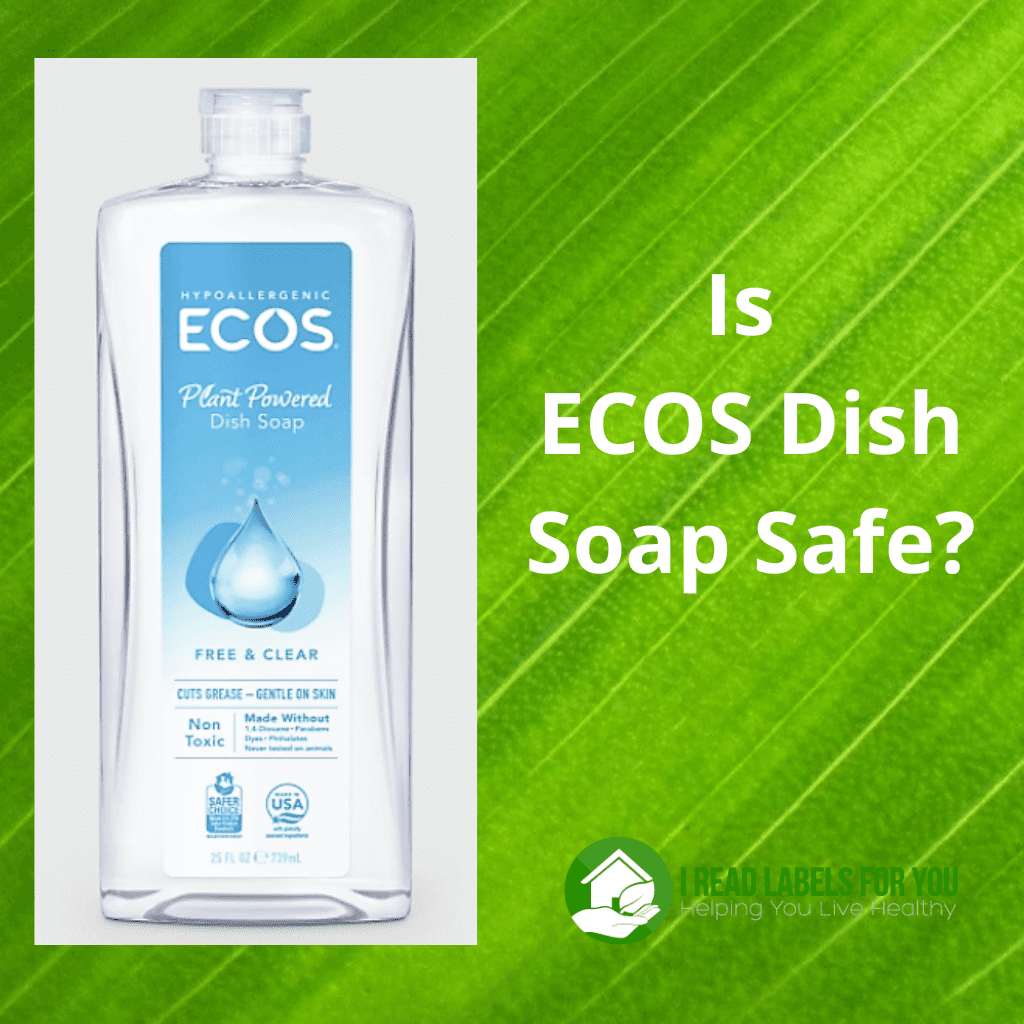
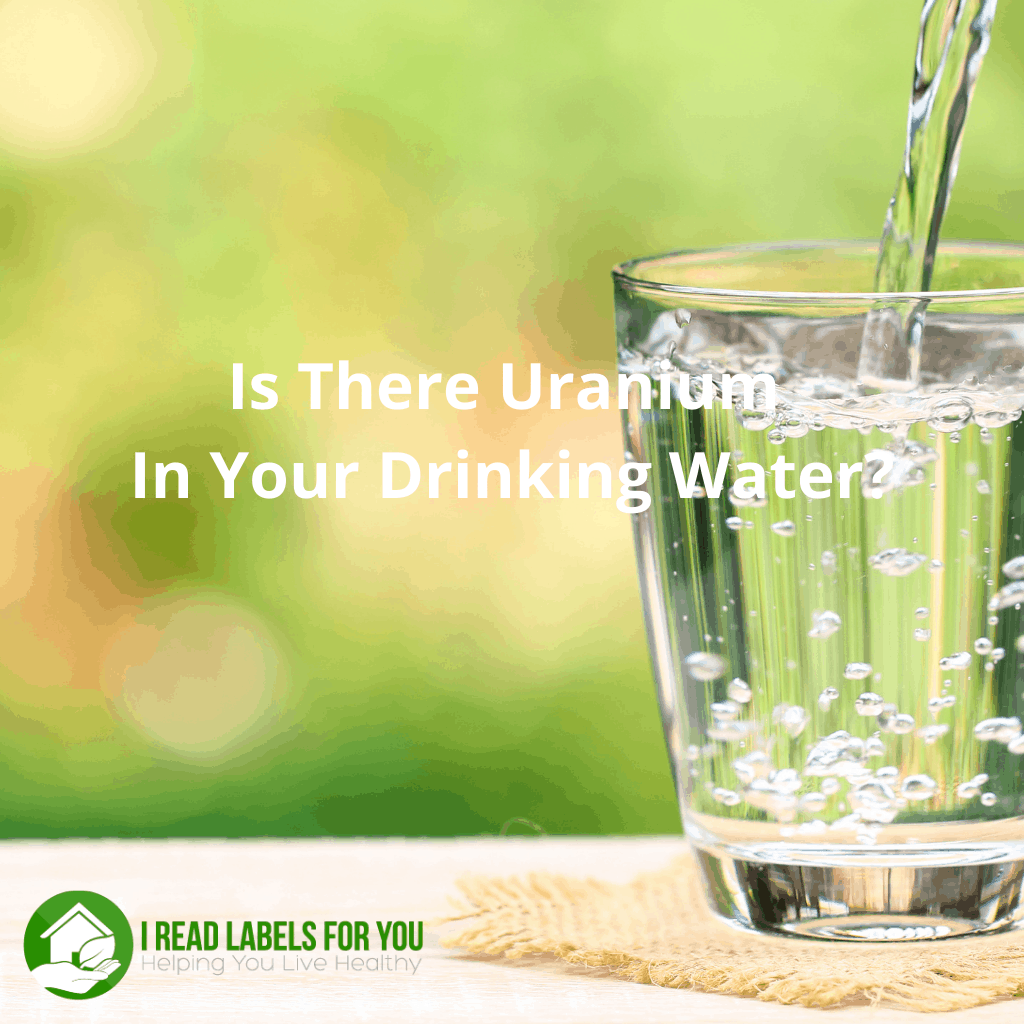


Wondering about the Instant Pot lid that turns it into an air fryer? The Instant Pot is considered a safe cooking appliance, is this still the case when using it as an air fryer? Also, our Samsung oven/range has an air fryer option. Is this a safe function to use?
Hi Chelsea, thank you for reaching out to I Read Labels For You! The important thing to consider for any high-heat cooking process is what materials the cookware in which the food is cooking is made of and avoid those that may potentially leach harmful chemicals into food.